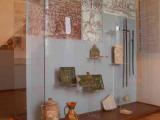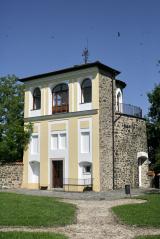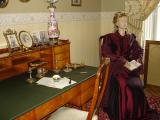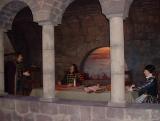
Nógrád County is rich in Medieval Castles and locations where once castles stood. Part of the ruins is of stone castles from the 13th century. There are less known fortresses that are so much camouflaged by the landscape we can hardly spot them. In addition to eleven castle national monuments, fifty Motte-and-bailies and locations where castles used to be are known.
The exhibition also illustrates castles where overseers were based, in addition to early castle types, fortress churches and mould fortresses. A spectacular example of the castle construction wave that took place in the 13-14th century is Hollókő. Bulk constructions from the 15th century are demonstrated by way of a scale models.
The second room presents Ottoman Hungary chain of fortresses in Nógrád. The subtitle of the exhibition and the finds from fortress excavations symbolize the cultural duality in the country, that has been the meeting of eastern and western cultures.





